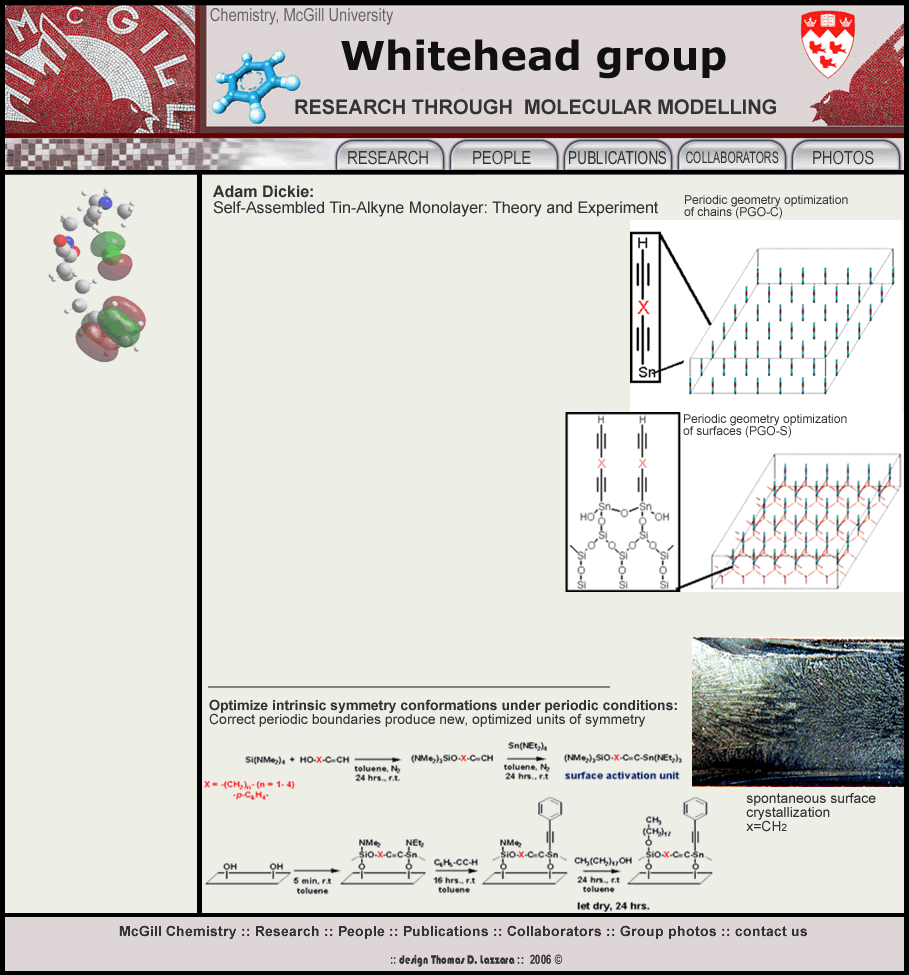Whitehead group
Contacts
address:
Prof. M.A. Whitehead
Department of Chemistry
McGill University
Otto Maass Chemistry Building,
801 Sherbrooke St. West,
Room 352,
Montreal, Quebec,
H3A 2K6, Canada.
Phone:
office: (514) 398-6239
lab: (514) 398-6905
fax: (514) 398-3797
email:
tony.whitehead@mcgill.ca
Chemistry of surface anchored[Sn]-NEt2 moieties with alkyne-terminated chromophores has been used to construct close packed thin films on Si(100)SiO2. Films exhibit enhanced optical and electical properties on the surface because of extensive conjugation within the adsorbed molecules.
Discrete surface organization of 1,9-decadiyne and p-diethynylbenzene monolayers on Si(100)/SiO2/SnO2 surfaces was determined with a unique and powerful molecular modelling approach, using rigid geometry scans and periodic geometry optimizations. Geometric arguments produced the monolayers packing space, and rapid optimizations gave small, repeating symmetric unit cells that correctly represented an infinite monolayer surface. Semi-empirical analysis classified the infinite thin films as semiconducting materials, because of organized Pi orbital overlap and the presence of acceptor bands from the Sn headgroups. Headgroup bonding was identified as a force for controlled monolayer order.
